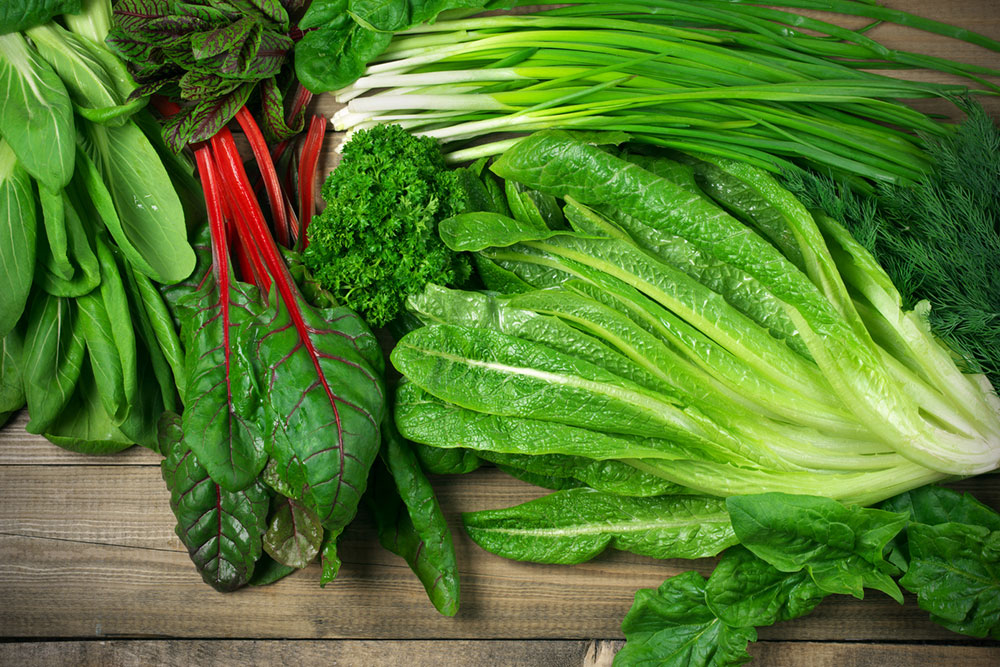9 foods that may help manage EoE and acid reflux

Eosinophilic esophagitis (EoE) is a condition in which an individual’s esophagus experiences inflammation due to the growth of eosinophils. EoE shares similarities with acid reflux, sometimes known as heartburn or GERD. In both conditions, one may experience pain and a blockage in the esophagus. Certain foods contain vital nutrients and other elements that enable people to manage their EoE and acid reflux conditions efficiently if they have one or both of them:
Leafy vegetables
Green leafy vegetables are excellent foods to prevent symptoms and flare-ups of EoE and acid reflux. Vegetables like Spinach, kale, broccoli, and others have low levels of acidic content. This quality helps maintain the body’s pH levels and prevents inflammation in individuals. Spinach, in particular, is high in fiber, making it easily digestible for individuals with acid reflux, GERD, or EoE. Overall, the low acidic levels and anti-inflammatory properties of green leafy vegetables make them a must-have for those with these health disorders.
Quinoa
Whole grains such as quinoa are low-acid foods the body needs to fight symptoms of acid reflux and heartburn. Like Spinach, quinoa also contains loads of fiber. It means one can digest quinoa at a much faster rate compared to some other foods. At the same time, it also contains plenty of protein, minerals, and B vitamins for consumers. Quinoa is also a capable replacement for wheat flour in EoE management. Wheat flour is one of the six categories of food that worsens EoE. Quinoa provides a feel and taste similar to wheat flour but with none of its potentially EoE-triggering attributes.
Coconut milk
Milk is one of the foods that may worsen EoE symptoms and flare-ups. There are many milk alternatives one can consume to keep such flare-ups away. A perfect option is coconut milk. Coconut milk contains nearly the same nutritional value as regular milk, while it does not contain the triggering proteins that increase the inflammation in a person’s esophagus. People can consume coconut-based foods like coconut smoothies, coconut yogurt, and coconut ice cream instead of their dairy counterparts. By soothing inflammation in the esophagus, coconut milk also significantly controls issues with GERD, acid reflux, heartburn, and other health conditions.
Ginger
Anti-inflammatory foods tend to perform much better against both EoE and acid reflux compared to other foods. In that sense, ginger is one of the best foods due to its astounding anti-inflammatory qualities. Ginger helps to relieve the inflammation in an individual’s esophagus and helps reduce reflux symptoms. At the same time, it also inhibits EoE flare-ups by reducing inflammation in the area.
Flax milk
Another one of the best substitutes for milk in the body is flax milk. Like coconut milk, flax milk contains loads of nutrients. This makes it a viable alternative to cow’s milk, which contains several proteins that tend to boost the rapid and aggressive growth of eosinophils in an individual’s esophagus. On the other hand, flax milk also contains the key cooling elements that reduce inflammation in the throat and esophagus, thereby reducing heartburn and acid reflux. Nonetheless, flax milk is a fantastic option for those vulnerable to EoE and acid reflux and who are not enamored by coconut milk.
Chicken
Certain foods, such as chicken, fish, and lean protein sources, contain low fat. This is useful to reduce acid reflux in individuals. One of how people experience acid reflux is after they eat foods loaded with saturated fats. Foods like chicken reduce the sensation of chest burn.
Additionally, these foods are also incredibly capable of inhibiting digestive distress, one of the leading causes of EoE aggravation. As a result, if an individual has EoE, GERD, or acid reflux, they can consume chicken and other low-fat foods to get instant relief from their symptoms.
Oatmeal
Oatmeal is another food that individuals must consume when they have EoE and acid reflux. Healthcare professionals and food experts often cite oatmeal as one of the best foods to combat EoE and acid reflux. Two of oatmeal’s most prominent qualities are its low-fat and high-fiber content. These attributes make oatmeal the prime breakfast meal for many individuals with EoE and acid reflux.
Like Spinach and several other foods listed here, oatmeal is incredible at absorbing acidity in the stomach and regulating acid levels throughout the digestive system.
Bananas
Bananas contain large amounts of potassium and other elements that aid in digestion, provision of energy, and other uses. Healthcare professionals advise those with acid reflux to consume it because of its low acid content that balances the pH levels in the body. Additionally, bananas have strong anti-inflammatory capabilities. This is why banana consumption is directly linked with a drastic reduction in eosinophilic growth in a person’s esophagus. Generally, most fruits and vegetables are a healthy and viable option to control and inhibit acid reflux and EoE symptoms in people. Among them, bananas are one of the best alternatives.
Brown rice
Another incredibly fibrous food is brown rice, a healthier alternative to white rice, which worsens EoE symptoms in people. Fibrous foods generally tend to make people undereat. This reduces the possibility of acid reflux, and heartburn caused due to overeating. Moreover, brown rice also reduces the likelihood of inflammation in people’s esophagus and digestive tract.
Individuals with EoE and acid reflux can also benefit from consuming other foods, such as chickpeas, fortified rice milk, fortified hemp milk, plum vinegar, and buckwheat, that are safe and nutritious to incorporate into one’s meals. Besides, it is also important to seek nutritional advice to manage these conditions effectively. Additionally, following a healthy lifestyle, such as keeping a record of one’s food intake, exercising regularly, and having a proper sleep schedule, can significantly contribute to alleviating the symptoms associated with EoE and acid reflux.


